Decision-making for early (Stages 1-3) breast cancer (eBC) surgery is complex and highly personal, requiring discussions between patients and multiple physicians. Shared decision-making (SDM) is an accepted process but its use by physicians is low due to a lack of time, incentives, complicated applications, and few communication tools.
SimBioSys developed TumorSight for individual treatment planning, SDM, and coordinated care. TumorSight rapidly builds 3D computational models from standard breast MRI data, combined with deep learning, clinical data, genomic testing, and metabolomics and for each person, along with prone to supine images for precision surgical planning and tools for better SDM with eBC patients.

Methods
10 key breast cancer Patient Opinion Leaders (POLs) were also queried after:
- A literature search revealed factors that impact eBC patients when making surgical decisions. See Figures 1 and 2.
- We created a semi-structured qualitative interview guide, reviewed by a Population Health Sciences expert.
each working with 20 to hundreds of eBC patients. Patient factors were discussed, followed by a video presentation and questions about potential TumorSight impact on eBC patient decision factors, and how it may aid SDM with physicians.
Diversity, Equity, Inclusion, and Accessibility (DEIA) questions were included to ensure that diverse eBC patient issues were identified. Selected POLs also represented geographic and ancestral diversity.
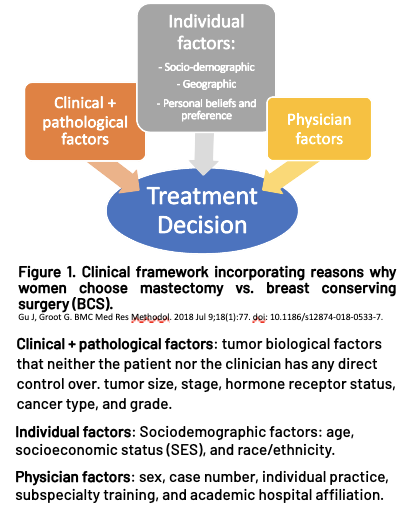
Surgeon Results
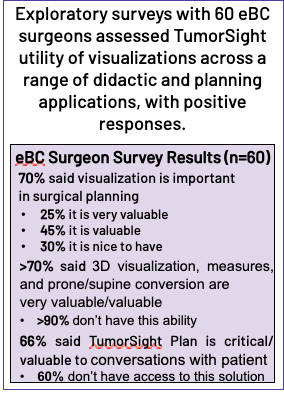
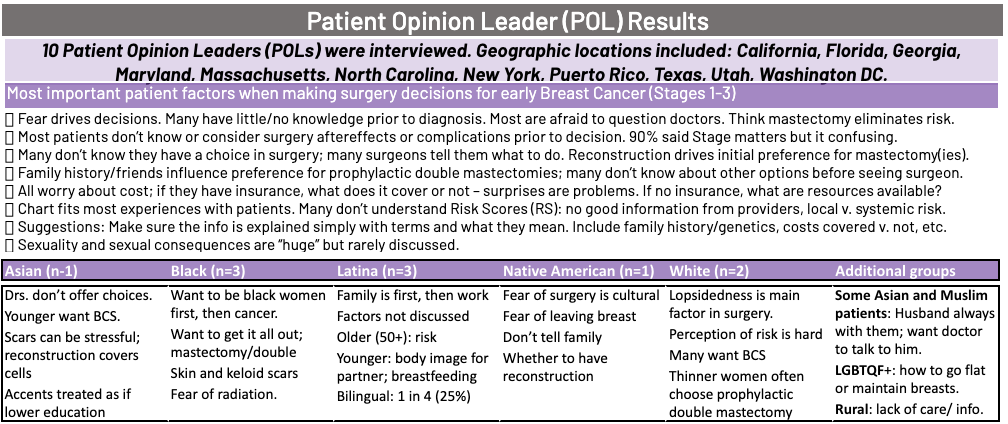
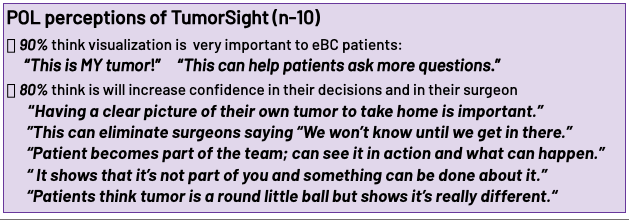
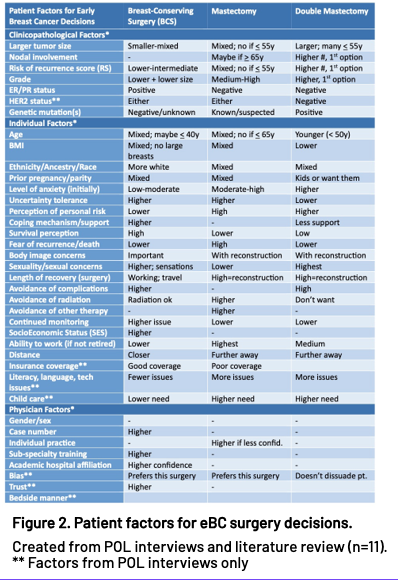
Conclusion
BC surgeon surveys and POL interviews show positive reception to TumorSight visualization for surgical planning and decision-making. Computational tools may facilitate patient understanding and patient-tailored treatment with health literate info. Results from POL interviews will be summarized and used to develop a future eBC patient survey.

